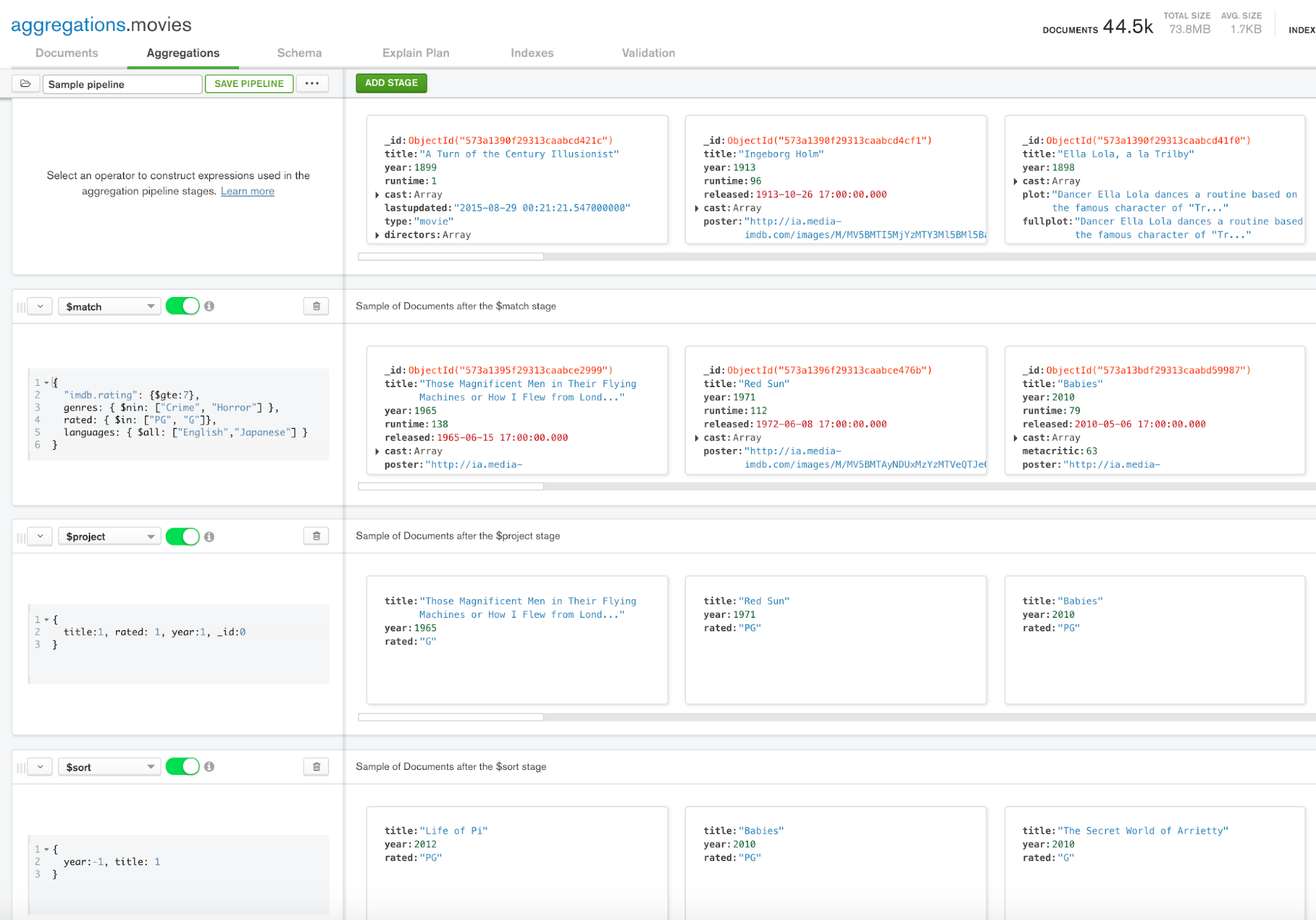

- #MONGODB COMPASS QUERY SELECT HOW TO#
- #MONGODB COMPASS QUERY SELECT DRIVERS#
- #MONGODB COMPASS QUERY SELECT PLUS#
In the following examples used in this article, the find() method returns all documents that match the query. For example, to limit the amount of data MongoDB sends to applications, you can include a projection document to specify or restrict fields to return.Ī projection can explicitly include several fields. It is the most widely used NoSQL database because it offers a comprehensive query language and universal and easy data access. In addition, MongoDB is also very successful at processing large volumes of data. MongoDB is an unstructured database management system that stores data in the form of documents. Select Single or Multiple Fields for All Documents in a MongoDB Collection

In this article, you will learn to select single or multiple fields for all documents in a MongoDB collection by performing basic query operations through projection. Since it will require you to collect or request the necessary data from the database to conduct analysis, you must choose the right tool to query the data. Use the Projection Method to Select Single or Multiple Fields for All Documents in a MongoDB Collectionĭata is produced at an unprecedented pace now following the global spread of the internet.Select Single or Multiple Fields for All Documents in a MongoDB Collection.Monitoring PostgreSQL with Navicat Monitor 3.Trace Queries on your PostgreSQL Instances with Navicat Monitor 3.Viewing PostgreSQL Instance Details in Navicat Monitor 3.A Quick Guide to Naming Conventions in SQL - Part 2.A Quick Guide to Naming Conventions in SQL - Part 3.Selecting Distinct Values From a Relational Database.Implement Audit Trail Logging Using Triggers.Multi-Version Concurrency Control in PostgreSQL.A Guide to MySQL Foreign Key Constraints.They are very fast because MongoDB only has to examine indexed documents, which are present in RAM.

If you're looking to give your queries a boost, consider using Covered Queries. You can choose Query > Explain from the main menu to see the execution stats on the query: Click the Run button to execute the query.In the query editor, type the following find() invocation:ĭb.film.find().Click the large Query button on the main toolbar followed by the New Query button on the Objects toolbar.To execute a query against our indexed fields: Finally, click the Save button, and give the index a name of "film_title_year".Now, click on Text tab, and, under the "Weights" header, follow the same process as above to select the two fields from the Field drop-down and assign a weight of 1 for both fields:.Select "release_year" from the Field drop-down and once again choose "ASC" from the Type drop-down.
#MONGODB COMPASS QUERY SELECT PLUS#
#MONGODB COMPASS QUERY SELECT HOW TO#
In today's blog, we'll be learning how to use Covered Queries to query data faster. Covered Queries are very fast because MongoDB doesn't have to examine any documents apart from the indexed ones. The Step 2: Run Atlas Search Queries page. A connection to the client you want to use to run the query. Atlas Search index on your collection in the Atlas cluster. To run a Atlas Search query, you must have the following: An Atlas cluster running MongoDB version 4.2 or higher.
#MONGODB COMPASS QUERY SELECT DRIVERS#
MongoDB has a specific application of field indexing called Covered Queries, where all of a query's columns are indexed. Run Atlas Search Queries in Compass, Drivers and mongosh. You've probably heard that column indexing is a great way to optimize query performance by minimizing the number of disk accesses required by the query.


 0 kommentar(er)
0 kommentar(er)
